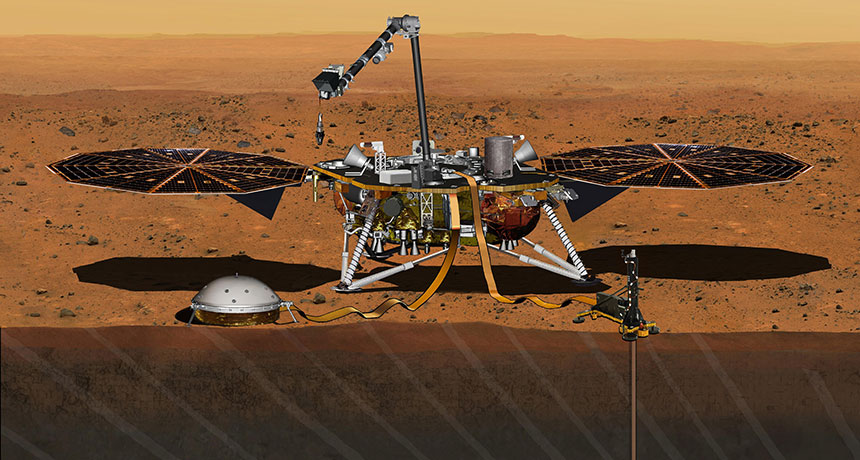-
Tips for becoming a good boxer - November 6, 2020
-
7 expert tips for making your hens night a memorable one - November 6, 2020
-
5 reasons to host your Christmas party on a cruise boat - November 6, 2020
-
What to do when you’re charged with a crime - November 6, 2020
-
Should you get one or multiple dogs? Here’s all you need to know - November 3, 2020
-
A Guide: How to Build Your Very Own Magic Mirror - February 14, 2019
-
Our Top Inspirational Baseball Stars - November 24, 2018
-
Five Tech Tools That Will Help You Turn Your Blog into a Business - November 24, 2018
-
How to Indulge on Vacation without Expanding Your Waist - November 9, 2018
-
5 Strategies for Businesses to Appeal to Today’s Increasingly Mobile-Crazed Customers - November 9, 2018
NASA Nixes Launch of InSight in March 2016
The agency said one of the key instruments of the spacecraft can’t be fixed in time for liftoff.
Advertisement
Although CNES will absorb the cost of repairing its instrument, there’ll be significant expense for NASA to store the spacecraft for two years and to keep the mission team intact.
The space agency planned to launch a new Mars lander called InSight in March from Vandenberg Air Force Base in California.
During a teleconference on December 22, while referring to the determination of the ultimate fate of InSight, John Grunsfeld, associate administrator for NASA’s Science Mission Directorate, said, “That’s all forward work”.
“We push the boundaries of space technology with our missions to enable science, but space exploration is unforgiving, and the bottom line is that we’re not ready to launch in the 2016 window”.
NASA said a decision on how to proceed with the mission will be made in the coming months.
Insight was expected to arrive at Mars in September to take measurements of the red planet’s interior and its atmosphere, and to take color images. The probe was to be one of the scientific tools that researchers would use to determine why Mars evolved so differently than Earth.
The instrument causing the trouble is the Seismic Experiment for Interior Structure (SEIS), a seismometer built by France’s Centre National d’Études Spatiales (CNES).
In a statement, NASA says, “The instrument requires a vacuum seal around its three main sensors to withstand the harsh conditions of the Martian environment”.
However, the space agency stated that the cancellation of InSight mission would not affect other Mars missions.
NASA made a decision to suspend its seismic investigations Geodesy and Heat Transport or inSight mission due to leaking and failure to hold a vacuum in extreme cold temperature.
With the spacecraft already being prepped for launch, mission managers decided that there wasn’t enough time to make the needed repairs. No planet besides Earth has yet been studied in this way, but the pouch that protects the spacecraft’s seismometer, which measures ground movement, is not holding a vacuum, according to NASA.
Advertisement
“Gaining information about the core, mantle and crust of Mars is a high priority for planetary science, and InSight was built to accomplish this”.




























